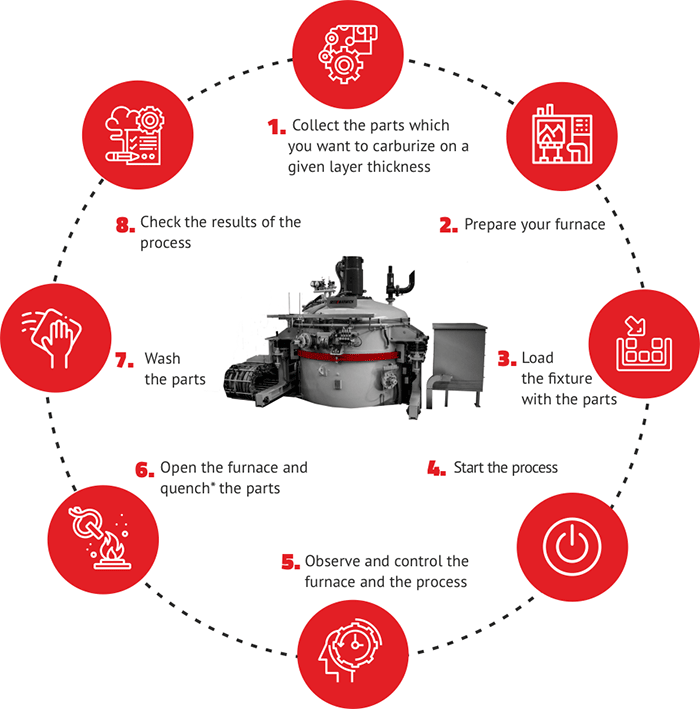DO YOU KNOW
How to carburize
thick layers in a vacuum
pit furnace?
www.secowarwick.com

1. Collect the parts which you want to carburize on a given layer thickness

- Thoroughly clean the parts and remove any residue left after machining.
- Estimate the surface area of your parts with the help of SECO/WARWICK’s user-friendly software.
- Place the parts on a dedicated fixture; make sure that the fixture is ready to withstand elevated temperatures.
2. Prepare your furnace

- Make sure that the furnace has been well maintained in accordance with the instruction manual.
- Ensure utilities are connected (No endogas generator needed; Pit uses only acetylene mixture).
- Choose your ideal vacuum carburizing recipe to achieve maximum savings on process time.
- Start your furnace immediately. No conditioning necessary!
3. Load the fixture with the parts

- Open the furnace (mind the temperature if the furnace is opened in hot conditions).
- Use the overhead crane to load the fixture with the parts into the furnace (this process can be automated).
- Close the furnace.
4. Start the process

- Start the process using either the furnace’s built-in HMI or a remote SCADA control system.
- Control system of the vacuum pit furnace archives thousands of recipes in the database with immediate access.
5. Observe and control the furnace and the process

- While the furnace is fully automatic, it is advisable to periodically monitor conditions using the HMI or remote control.
- Preventive maintenance features provide insight into every key sub-assembly of the furnace.
- Optional cloud data storage provides limitless archiving possibilities.
6. Open the furnace and quench the parts

- Open the furnace (caution: 1050°C is really hot).
- Remove the fixture with parts using the overhead crane and place it in a quench bath (this can be automated); alternately, leave them in the Pit to cool using its built-in quenching system.
- Load the next batch or shut down the furnace. No constant temperature conditioning necessary.
7. Wash the parts

- After the quenching process, place the fixture with the parts in a washing machine.
8. Check the results of the process

- Check if the obtained results correspond with your requirements.
- Admire uniform effective case depth [ECD] and the fact that there is no intergranular oxidation [IGO] in your parts.
- Calculate your savings gained in comparison with traditional atmosphere pit carburizing furnace.



